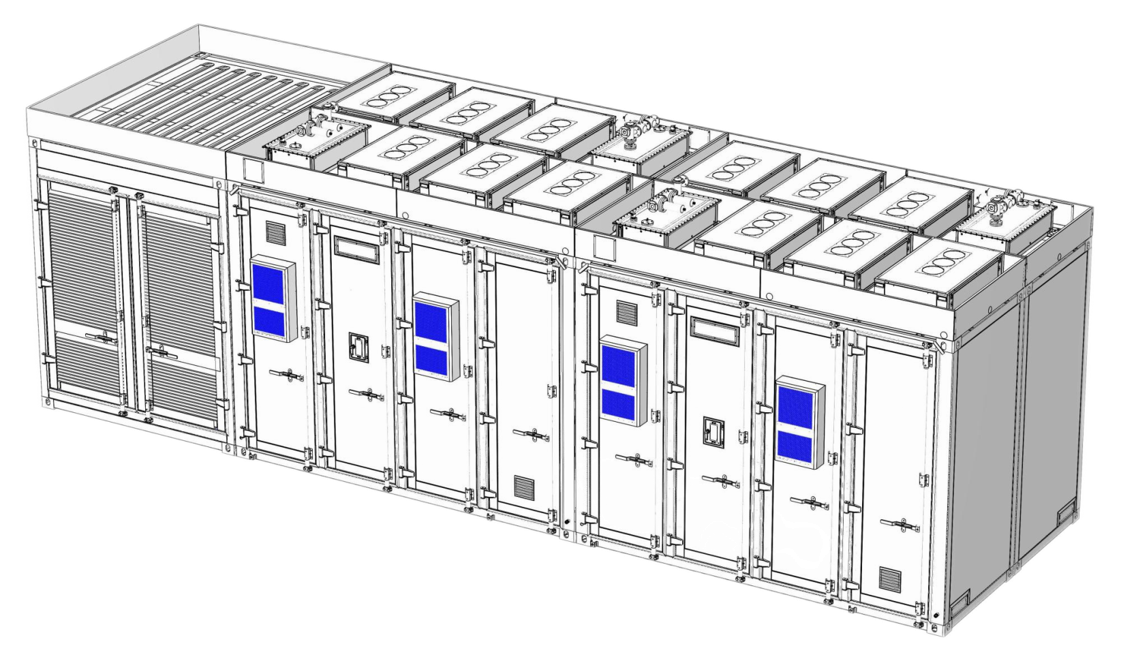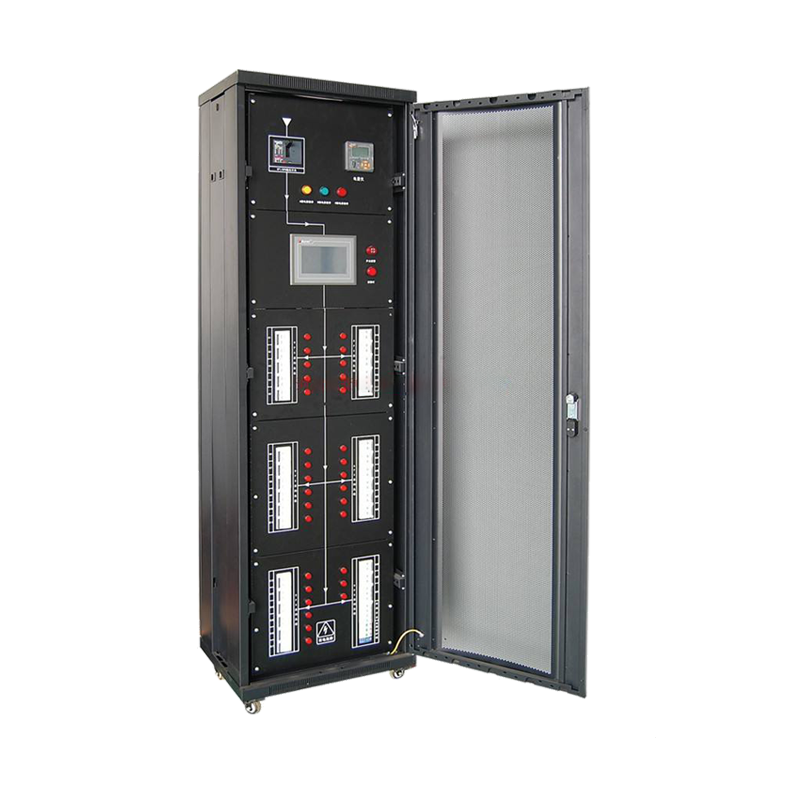- The product description
- The main function
- The basic parameters
This system adopts a static immersion liquid cooling scheme and adopts anhydrous liquid cooling technology. The battery cells are completely immersed in insulation and heat dissipation liquid. By collecting temperature data of the battery cells, the temperature control system controls the cooling and heating output, and adjusts the internal temperature environment of the energy storage system. The battery cell temperature can be controlled within 25 ± 2 ℃, ensuring efficient operation of the battery cells. At the same time, fundamentally avoiding the risk of electrical system short circuits caused by the cooling water or condensate of the refrigeration system itself, thereby avoiding thermal runaway accidents caused by short circuits in the battery pack.
This system consists of four 1.376MWh battery compartments and one 2.75MW-PCS compartment. The total power and capacity of the system are 2.75MW-5.5MWh. The PCS system adopts a modular installation method, with each cluster of cells corresponding to a PCS module. The entire system consists of 16 PCS modules, four clusters of batteries forming a 1.376MWh battery compartment, and four battery compartments forming a 5.5MWh battery system
This system adopts a static immersion liquid cooling scheme and adopts anhydrous liquid cooling technology. The battery cells are completely immersed in insulation and heat dissipation liquid. By collecting temperature data of the battery cells, the temperature control system controls the cooling and heating output, and adjusts the internal temperature environment of the energy storage system. The battery cell temperature can be controlled within 25 ± 2 ℃, ensuring efficient operation of the battery cells. At the same time, fundamentally avoiding the risk of electrical system short circuits caused by the cooling water or condensate of the refrigeration system itself, thereby avoiding thermal runaway accidents caused by short circuits in the battery pack.
This system consists of four 1.376MWh battery compartments and one 2.75MW-PCS compartment. The total power and capacity of the system are 2.75MW-5.5MWh. The PCS system adopts a modular installation method, with each cluster of cells corresponding to a PCS module. The entire system consists of 16 PCS modules, four clusters of batteries forming a 1.376MWh battery compartment, and four battery compartments forming a 5.5MWh battery system
This system adopts a static immersion liquid cooling scheme and adopts anhydrous liquid cooling technology. The battery cells are completely immersed in insulation and heat dissipation liquid. By collecting temperature data of the battery cells, the temperature control system controls the cooling and heating output, and adjusts the internal temperature environment of the energy storage system. The battery cell temperature can be controlled within 25 ± 2 ℃, ensuring efficient operation of the battery cells. At the same time, fundamentally avoiding the risk of electrical system short circuits caused by the cooling water or condensate of the refrigeration system itself, thereby avoiding thermal runaway accidents caused by short circuits in the battery pack.
This system consists of four 1.376MWh battery compartments and one 2.75MW-PCS compartment. The total power and capacity of the system are 2.75MW-5.5MWh. The PCS system adopts a modular installation method, with each cluster of cells corresponding to a PCS module. The entire system consists of 16 PCS modules, four clusters of batteries forming a 1.376MWh battery compartment, and four battery compartments forming a 5.5MWh battery system















